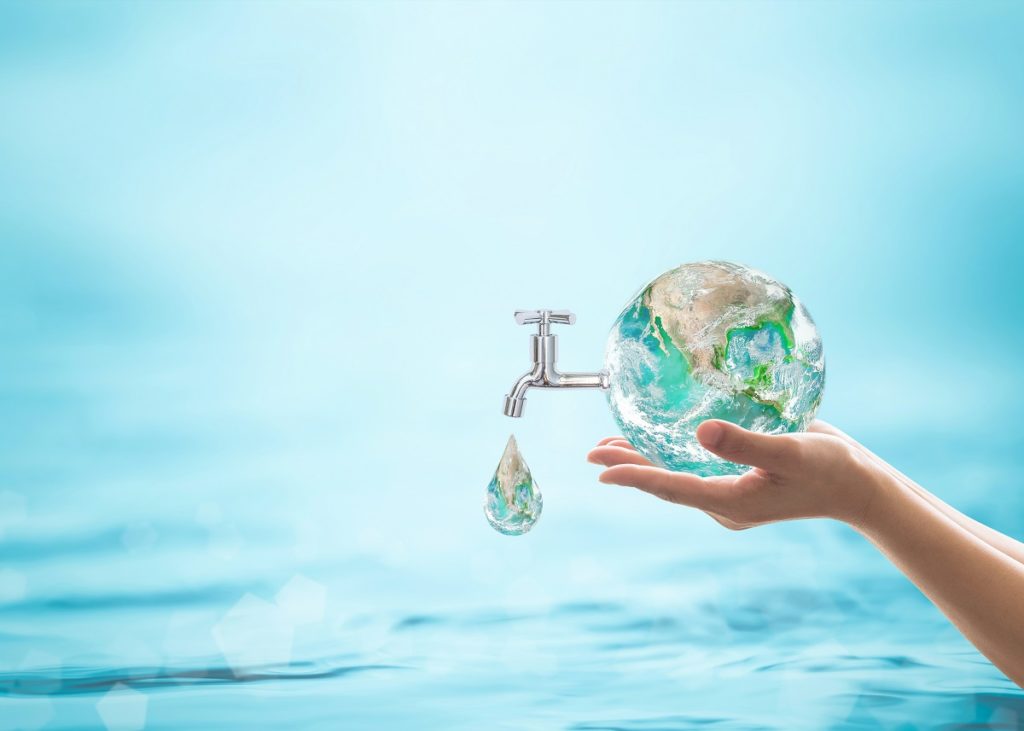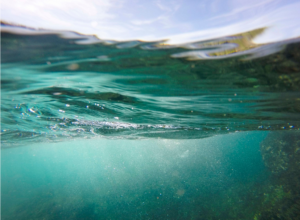Most children know that turning off the faucet while you brush your teeth saves water, but it’s less intuitive to see that turning off the bathroom light or opening windows in the summer can too.
People have been using water as energy since 200 BC when the Romans used water to turn mills that crushed grain, shaped iron, and cleaned cloth. This decreased the community’s dependence on human and animal labor and increased productivity. Today, water is used in the production of energy whether it be hydro-power, coal, or gas power.
The extraction and processing of natural gas, coal, oil, and uranium (for nuclear energy) require the use of water. Mining-related water withdrawal accounted for over 5,000 million gallons of water uptake per day in 2010. These withdrawals were most significant in drought likely states such as California, Oklahoma, and Texas. Not only do mining processes use and consume the water they can also contaminate it. Mineral extraction often results in toxic waste. Improper disposal of this waste can lead to drinking water contamination. In Laurel Creek West Virginia, coal slurry injections close to freshwater aquifers lead to toxic levels of heavy metals in drinking water. Slurries are a solution of water and finely ground coal. Hair samples from residents whose drinking water were within 3 miles of several million gallons of slurry injections, showed evidence of elevated heavy metal levels. The hydrogen sulfide concentration in local tap water samples were 2 times over the EPA limit. Efforts have been made to mitigate pollution from fossil fuel energy production, but even mitigation methods contribute to water use and consumption. For example, the World Energy Council reports that carbon capture and storage technology increases the water consumption of fossil fuel plants by 50-90%.
In the U.S. 90% of electricity comes from thermoelectric power plants. Thermoelectric power uses steam to turn turbines that create electricity. These power plants use coal, natural gas, and oil-based energy sources to heat water and make steam. They also use water as a cooling agent. While most of this water is returned back to its source, it is often returned at a higher temperature, creating thermal pollution. Almost 40% of all water extracted from U.S. water sources is used for thermoelectric power. According to the Union of Concerned Scientists, coal and nuclear plants use anywhere from 20 to 60 gallons of water for every kilowatt-hour of electricity produced. In 2008, power plant cooling accounted for 100 billion gallons of freshwater withdrawal a day.
An increase in electricity demands, due to population density and temperature rise, make these cooling systems less efficient. Drought and change in climate make water availability unpredictable in many regions across the United States. These reasons make it clear why the U.S. Department of Energy is concerned about the implications of climate change, and preservation of natural water resources. The DOE has a whole water-energy task force that works on these challenges. The Water-Energy Tech Team pursues research, develops technology, and shares data to inform policy and suggest best practices to energy providers.
So, what now?
Alternative energy is a popular buzzword solution to pollution from coal, gas, and petroleum. While wind and solar use less water than conventional methods; biofuel, geothermal, and hydropower can use even more water than fossil fuels. The recent recycling trend can be used as a parallel for the promotion of alternative energy. The country jumped on board the recycling bandwagon and left the reduce and reuse part of the mantra behind. Likewise, while alternative energy can help mitigate pollution from energy production, reduction of energy waste and energy efficiency should be addressed as well. In the United States, 30-50% of all energy and water transported to buildings are lost as waste. Energy production is regulated only by consumer consumption. Users get to supply the demand, meaning we can control our own energy and water waste.
Lowering our water consumption will take more than just installing water saving technology like low flush toilets, however. In the United States, 40% of our total food supply goes to waste, meaning that 25% of our annual water consumption goes to waste as well. Drinking one less cup of coffee can save up to 150 liters of water. Collecting rainwater to use for non-consumptive activities such as car washing and garden watering can save on municipal water extraction. According to the DOE, it takes ¾ of a gallon of water to produce the gas used to drive just one mile. The average United States citizen drives 37 miles a day. Not only will driving less save water, but it will also save you money. The Public Transport Organization reports that buying, maintaining, and operating cars is the largest household expenditure after housing in the United States. The average American household could save $9,700 by using public transportation and having just one less car. When considering an energy source sustainable, it’s important to look at the whole supply chain, from the method of extraction to means of transportation, to volume of consumption. Big picture analysis should be used both in policy and personal day to day choices when deciding what decisions are best economically and for the community.








